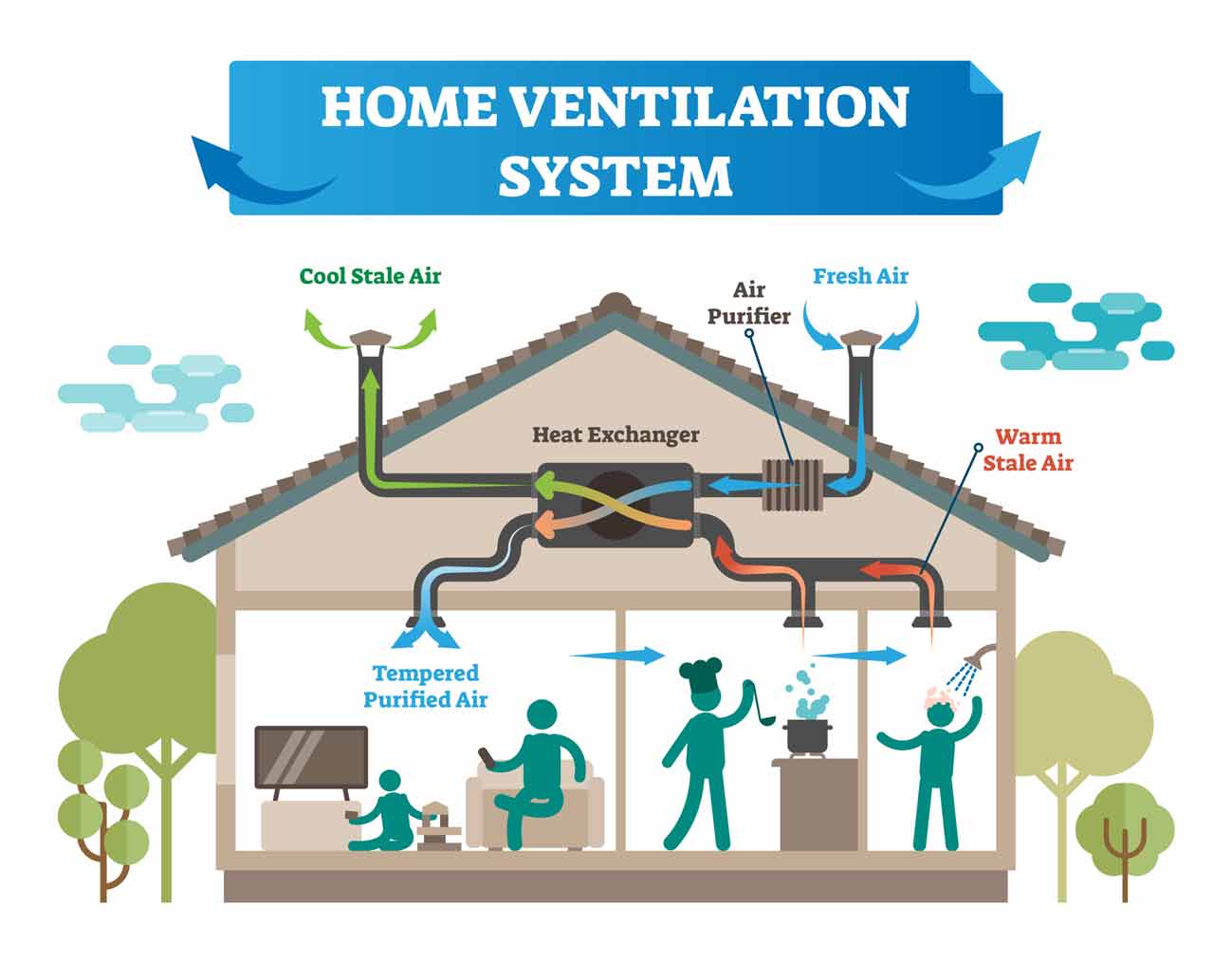How HRV Cuts Down Energy Bills Every Month
Checking out the Conveniences of Heat Recovery Ventilation for Energy Performance in Residences
Heat Recovery Ventilation (HRV) systems provide homeowners a sensible technique to enhancing power effectiveness. By recovering warm from outbound air, these systems can significantly decrease heating & cooling expenses. In addition, they provide a consistent supply of fresh air, improving indoor air quality and convenience levels. As home owners think about lasting alternatives, comprehending the subtleties of HRV systems comes to be progressively crucial. What aspects should one assess before making such a financial investment?
Recognizing Heat Recovery Ventilation Equipments

Just How HRV Boosts Indoor Air High Quality

Energy Cost Savings: The Monetary Advantages of HRV
Taking full advantage of power efficiency, heat recovery ventilation (HRV) systems use substantial financial benefits for property owners. By recovering and recycling heat from exhaust air, HRVs considerably reduce heating & cooling costs. This technology can result in energy financial savings of as much as 30%, depending on climate and usage patterns. Property owners typically observe reduced energy expenses soon after installation, making HRVs a financially smart investment over time. In addition, several areas offer incentives or discounts for energy-efficient upgrades, additionally you can check here enhancing the financial charm. As energy prices remain to rise, the cost-effectiveness of HRVs ends up being increasingly clear. In general, the consolidation of HRV systems not only advertises energy effectiveness yet also contributes to long-term economic cost savings for families.
The Environmental Impact of Heat Recovery Ventilation
A significant environmental advantage of heat recovery ventilation (HRV) systems depends on their ability to reduce overall energy Find Out More usage. By reclaiming heat from exhaust air and moving it to incoming fresh air, HRV systems decrease the demand for energy-intensive home heating and cooling down methods. This decrease in energy demand contributes to decrease greenhouse gas exhausts, as less nonrenewable fuel source is called for to preserve comfy indoor temperature levels. Furthermore, HRV systems enhance interior air high quality by efficiently exchanging stagnant air with fresh exterior air, minimizing dependence on mechanical cooling systems that can damage the atmosphere. Generally, the application of HRV systems supports sustainable living methods and straightens with worldwide initiatives to fight environment adjustment by advertising energy effectiveness in household setups.
Selecting the Right HRV System for Your Home
Just how can property owners ensure they choose the ideal heat recovery ventilation (HRV) system for their demands? Initially, they need to analyze their home's dimension and design, as these factors affect air movement requirements. Next, evaluating the system's efficiency scores is important, as higher rankings suggest better efficiency and energy financial savings. Home owners ought to additionally think about installment and maintenance prices, comparing different brand names and designs for worth. Furthermore, it is essential to examine sound degrees, as some systems run more silently than others. Consulting with a/c professionals can give customized referrals based on specific home problems. Examining customer testimonials and service warranties can help in making an informed choice, guaranteeing that the picked HRV system efficiently enhances interior air top quality and energy effectiveness.
Frequently Asked Inquiries

How Often Should I Tidy or Keep My HRV System?
The regularity of cleaning or preserving a warm recuperation ventilation (HRV) system usually depends upon usage and environmental aspects. Usually, it is recommended to perform upkeep every 6 months to assure peak efficiency and air quality.

Can HRV Systems Aid Decrease Moisture Levels Inside?
HRV systems can effectively reduce interior humidity levels by trading stagnant, humid air with fresh, drier air from outside. HRV Heat Recovery Ventilation. This procedure helps keep a well balanced interior setting, enhancing comfort and stopping moisture-related concerns
What Is the Life expectancy of a Common HRV System?
The lifespan of a normal heat recovery ventilation (HRV) system differs, typically lasting in between 10 to 15 years. web link Normal upkeep can extend its performance and functional life, guaranteeing peak performance throughout its usage duration.
Are There Any Sound Problems With HRV Systems?
Noise worry about HRV systems can emerge, especially from follower procedure. Nevertheless, numerous modern-day systems are created to reduce sound levels, ensuring they operate silently while keeping performance, which addresses prospective disruptions in living atmospheres.
Can I Install an HRV System Myself, or Do I Need an Expert?
The specific contemplated whether to install the heat recovery ventilation (HRV) system directly or hire an expert. Generally, while DIY setup is feasible, experience assurances proper performance and conformity with neighborhood building codes, boosting system efficiency.